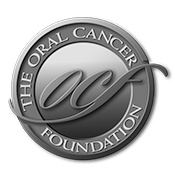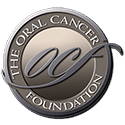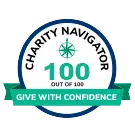Saliva is a humdrum liquid, the stuff of giggles, dribbles and schoolyard grossness. It’s hardly something to take seriously–until, that is, you lack it. When your glands no longer pump out a normal and robust 2 to 3 pints daily, then you’ll come to appreciate spit for the wondrous substance it is–one that does far more
than render food slimy and digestible.
Saliva, science has revealed, is much more than water. It is packed with proteins that help control the teeming hordes of microbes in our mouths. It is stuffed with substances that make our spit stringy, stop our teeth from dissolving and help heal wounds. It is brimming with a plethora of hormones and other chemicals revealing anything from whether one smokes to whether one is stressed.
Thus it’s no wonder that trouble starts brewing when mouths dry out. Cavities blossom like flowers in spring. Tongues become sore and fissured, and breeding grounds for yeast. In a spit-depleted world, speaking and swallowing are challenges, eating a cracker is the height of recklessness and you wake up with your tongue glued to your mouth.
Such indignities will be more frequent in future years because the number of saliva-depleted people stands to rise, experts predict. Tens of thousands of Americans receive radiotherapy for head and neck cancers each year–a treatment that can permanently damage salivary glands. Maybe a million have dry mouths because their immune systems are attacking their own glands in a disease known as Sjogren’s syndrome.
But an increasing number of people (25 million by some estimates, and more to come as the population ages) get dry mouths as a side effect of more than 400 of today’s medications–taken for depression, high blood pressure and more.
A small band of scientists is fighting back.
Armed with a deep knowledge of saliva gleaned over decades, this cadre–which jocularly refers to itself as the “salivation army”–is working to create better artificial salivas to keep mouths wet and protected and find new drugs to help saliva flow more freely. They’re trying to repair salivary glands with gene therapy–even to build an artificial gland to implant in the mouth.
And their vision goes far beyond simply mending the mouth. Just as leech saliva gave us anticoagulants, researchers hope that our very own spit may yield new antimicrobial drugs to help battle germs. Or that sick people’s salivary glands can one day be coaxed to make hormones that are needed for their bodies to heal.
“The field’s quite exciting–we’re entering a new phase,” says Lawrence Tabak, a longtime saliva scientist and director of the National Institute of Dental and Craniofacial Research. “People are trying to translate what they’ve learned from nature into things that are going to improve patients’ health. To me, that’s the most exciting thing possible–to take these great, basic science discoveries and translate them into tangibles.”
Tangible breakthroughs on the saliva front can’t come too soon for Nancy Ross-Flanigan, 52, a Detroit area writer who’s been pretty much spitless for 11 years, ever since her salivary glands were blitzed during radiotherapy for tongue cancer.
Nothing, she says, prepared her for just how dry things would be.
“I just assumed–well, everybody has dry mouth when they get nervous or something–that’s what I thought it would be like,” she says. “That you could still talk. You could still eat. You wouldn’t have to be putting something in your mouth all the time to have any moisture.”
But her mouth ended up so dry it wouldn’t yield spit even when doctors tried milking her glands with a suction cup stuck inside her cheek. Unless she sipped water every few minutes, her mouth gummed up, her throat got scratchy, she croaked, and then she choked. Life’s most humdrum events became tinged with new drama. She learned to favor slimy pastas and soups after a series of spectacular restaurant choking incidents–and a time, on a lunch date, when a wad of bread wedged fast under her lip, bulging it out like a chipmunk’s cheek. She experimented with a long stream of over-the-counter mouth moisturizers that her friends jocularly referred to as “I Can’t Believe It’s Not Saliva!” She tried a drug to stimulate her glands. It left her saliva flow almost unchanged but sent other bodily secretions into overdrive, drenching her with sweat in the grocery store or office.
Today, Ross-Flanigan uses over-the-counter pills that coat her mouth with slime–but mostly she just totes water everywhere. She carries it in sundry bottles, plastic jugs and on a pouch on her back when she rides out (not quite as wild and free as she’d like) on her Harley motorcycle. It is far from ideal. Water isn’t slick like saliva, so her mouth gets dry and sore. Sinister scenarios color her fantasies of overseas travel: “I think, ‘Gee, what if I get captured by terrorists and they won’t let me have my spit bottle?'” And sometimes, she says, she just feels plain dorky. Like the time she went backstage to meet her rock idol, Joe Cocker. There she was, dressed to the sexy nines in spandex skirt, slinky top, strappy shoes–accessorized by a giant, red, plastic picnic jug.
Few people suffering from dry mouth are quite as desiccated as Ross-Flanigan. But they can still run into nasty trouble, says saliva expert Mahvash Navazesh, associate professor and chairwoman for oral medicine and oral diagnosis at USC’s school of dentistry (and possibly the only person to possess a plush teddy bear with “spit queen” inscribed on it). She holds up slide after slide depicting only too clearly what she means–raw tongues white with yeast, teeth brown or black with decay on their ridges as well as at or under the gumline, where decay is usually rare. If only, she says, more dentists and doctors had saliva at least somewhat on their minds. “I don’t think people are paying enough attention,” she says. “Because of that, dentists are usually doing damage control. They are treating dental problems rather than preventing them.”
Early Diagnosis Can Mean Saving One’s Teeth
To Navazesh’s mind, the first part of paying attention is measuring saliva flow properly so you know if there’s a lack–and she is an expert at that, demonstrating her craft one morning on a well-dressed, middle-aged woman who has been referred to USC with a suspected saliva shortage.
At Navazesh’s request, the patient sits in the dentist’s chair, head tilted upward, eyes open, and drools into a tube for five minutes. Next she chews gum for five minutes in time with the click of a metronome–and spits into a second tube. Finally, she sucks a lemon candy (again in time with the metronome) and spits into tube No. 3. The tubes are weighed–the first holding a dribble, the second an inch, the third nearly two–and saliva output calculated. Finally, the verdict is delivered: The patient’s flow is on the low side and could indicate an early stage of Sjogren’s syndrome.
Diagnosis is crucial, experts say, because there are things patients and dentists must do to fight rampant tooth decay. Stringent oral hygiene is key–brushing and flossing after every meal, daily application of fluoride gels, monthly tooth-cleaning appointments. “I could have gone around the world four times on the money I’ve spent on my teeth,” says art teacher and Lakewood resident Ruth Eyrich. Her Sjogren’s syndrome was diagnosed in 1985 after her dentist found more than 14 cavities on one tooth and asked her what the dickens she’d been doing. Yet despite monthly visits to the hygienist and everyone’s best efforts, she says, her teeth have slowly crumbled over the years–through a long procession of fillings, crowns, root canals, bridges and 13 dental implants. She pores over the pages of “The Moisture Seekers,” a Sjogren’s newsletter, and hopes one day she’ll read of a big breakthrough. It hasn’t come yet.
Thus, along with diagnosis and care, a third line of attack is needed to help the dry mouth brigade–one that’s been sorely neglected, say scientists. Better therapies. “A lot of my patients are suffering–there’s no good answer for them,” says Nelson Rhodus, director of the Oral Medicine and Xerostomia Clinic at the University of Minnesota in Minneapolis.
Drug companies continue to neglect the dry mouth arena, he says, because they don’t see much money in it. And today’s gland-stimulating drugs can only help people with glands left to stimulate. Artificial salivas, unimpressively, have fared no better than tap water in most clinical trials. It’s time, experts say, to bring more science to bear.
A Relatively Recent History of Study
Saliva science kicked off relatively late in the history of medicine, recounts Irwin Mandel, grand old man in saliva research and somewhat of a historian on salivary matters. Centuries before Mandel got his hands wet in the lab, physicians thought the salivary glands were lowly excretory organs–ridding the body of toxins and evil spirits from the brain. They would dose patients with poisonous bichloride of mercury, causing saliva to pour from the mouth. Even in the last century, scientists only got serious with saliva well after they’d tackled other bodily fluids like blood. (“Saliva doesn’t have the drama of blood, it doesn’t have the integrity of sweat, it doesn’t have the emotional appeal of tears,” says Mandel, a professor emeritus of Columbia University.) But from the ’50s onward, Mandel and a handful of others have established that human saliva is filled with hundreds of useful chemicals, floating around with millions of bacteria, viruses, yeast and skin cells in what Mandel terms a “chowder.” They’ve been busily investigating such proteins–and finding that some are important for maintaining oral health.
There are long, sticky and stretchy proteins called mucins that are studded all over with carbohydrates, giving saliva its stringiness so it nicely coats the teeth and gums. Mucins are a royal pain to study, says Paul Denny, a saliva molecular biologist at USC. (“They stick to everything,” he says with a sigh.) But they’re worth it. Studies from various labs suggest that mucins do more than form a physical barrier protecting the teeth. They also stick to bacteria that cause tooth decay and gum disease, interfering with their ability to colonize teeth, and helping our immune cells attack them. And mucins are just the tip of the iceberg. Other proteins–with names like peroxidase, lysozyme, lactoferrin and histatin–as well as our own antibodies also wreak havoc on bacteria and fungi. Some salivary proteins, such as one fondly referred to as “slippy,” hasten the healing of wounds. Some (“slippy” again, among others) neutralize viruses like HIV. Others keep saliva super-loaded with calcium and phosphorus, the stuff of tooth enamel, so these minerals don’t leach from teeth.
“If saliva were water, we would have little stumps of teeth or no teeth at all by age 20–we would have dissolved our teeth away,” says Frank Oppenheim, chairman of the department of periodontology and oral biology at Boston University. Some of these proteins have been studied in small trials–such as the histatins, long Oppenheim’s passion, which inhibit the growth of yeast and bacteria. In one histatin study, beagles were first brought to the heights of oral health by rigorous daily toothbrushing. Then, for 42 days, they ate a diet causing plaque buildup, and either received histatins in an oral gel or the gel alone. At the study’s end, those given histatins had developed less gum inflammation and plaque than the other group.
In another trial, 159 healthy humans refrained from brushing their teeth for four weeks. Yet again, those using a mouth rinse containing a portion of the histatin protein developed less plaque and gum inflammation than those who didn’t. Currently, a Pittsburgh company, Demegen, is developing a histatin mouth rinse–one that could be used to fight oral yeast infections in people with faulty immune systems. But some researchers hope that knowledge of spit proteins could improve the quality of artificial salivas–both in terms of texture and cavity-fighting clout. Today’s faux salivas usually contain a synthetic thickening chemical–but it makes the fake fluids too thick, says Rhodus. (“If people have cotton-mouth to begin with, using this stuff is like putting glue in there.”)
With both types of improvements in mind, Dutch scientists, among others, are busy testing sundry fake salivas seasoned with this or that microbe-fighting protein. They’ve developed fake salivas containing synthetic gums or mucins harvested from pig stomach, which are appreciated for their slithery feel. But it’s tough to create anything close to a fluid that’s been fine-tuned through millions of years of evolution, says Arie van Nieuw Amerongen of the Academic Center for Dentistry in Amsterdam. The pig mucins, for instance, are sticky enough but just aren’t stretchy enough. “Hardly anybody thinks about spit. But when they miss it, they see how many properties it has–and how difficult it is to mimic,” he says.
Rats: Gene Therapy Is Still a Long Way Off
Instead of mimicking saliva, some scientists want to fix the faucet and get fluid flowing again, using gene therapy. Ross-Flanigan has heard of that: She’s even got some clippings about it in her “saliva” file. She’d do it in a flash if she thought it would work. So far, though, only rats have really had their dry mouths cured, says Bruce Baum, chief of the gene therapy and therapeutics branch of the National Institute of Dental and Craniofacial Research. The rats (whose glands were first destroyed with irradiation) didn’t grow spanking-new glands. Instead, tissues that don’t normally ooze fluid were genetically changed into oozers. The approach: infecting those watertight tissues with a harmless virus carrying a special gene, called aquaporin. Aquaporin directs the formation of a protein that muscles its way into the membrane and forms a pore through which water can pass. Rats may be curable, but Ross-Flanigan won’t be able to get the blitzed remains of her glands studded with water pores any time soon. The strategy hasn’t yet been shown effective in pigs and primates, let alone tested in human trials.
Gene therapy, in any case, isn’t the only saliva science exciting Baum. His group is also working hard on an artificial gland–one that would be built from scratch out of skin cells engineered to ooze fluids. The cells would be coaxed to grow on a biodegradable tube that would then be implanted in the mouth. Baum and an Alameda biotech company, Genteric Inc., are also excited at the thought that salivary glands can be used as little factories. The glands, both point out, don’t just ooze fluid and proteins into the mouth. They ooze them into our blood. Thus, while you could certainly add genes to improve the quality of someone’s saliva, you could also add genes that would help supply hormones for the rest of the body: growth hormone, insulin, you name it. In fact, says Tabak, you can dream on and on about stuff one can do with this lowly fluid and the glands that make it. Maybe one day scientists will find a salivary gland stem cell and build whole new glands from scratch. Maybe one day all those hormones that are floating around in our spit will allow engineers to build tiny sensing devices that sit in our mouth, constantly monitoring our health and telling us off if we light up a cigarette. “Imagine it telling you, ‘Go see your physician’ or ‘Danger: You Have Taken in Too Much Alcohol,'” Tabak says. “You can fantasize about all kinds of things.”




